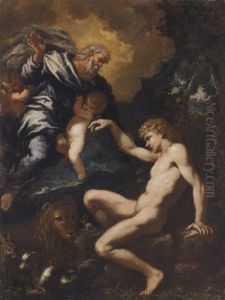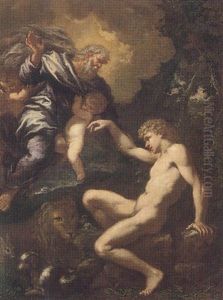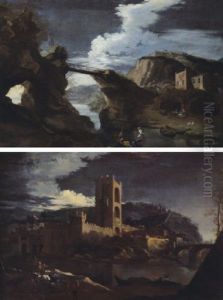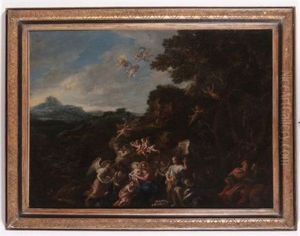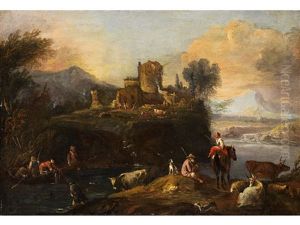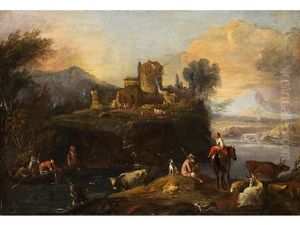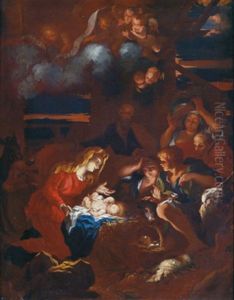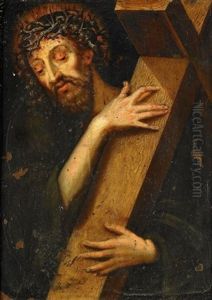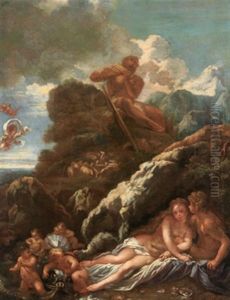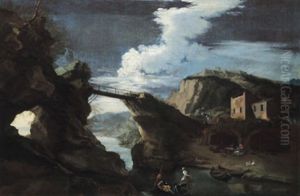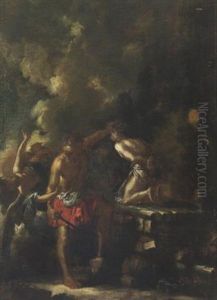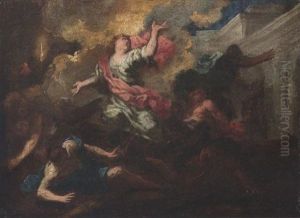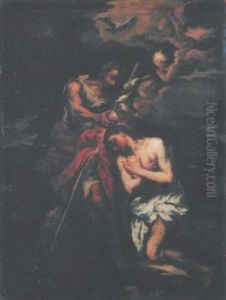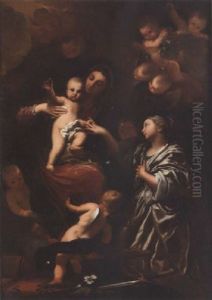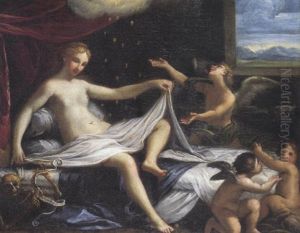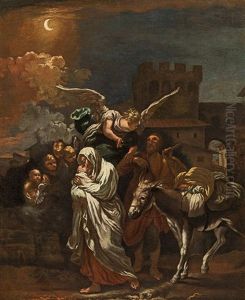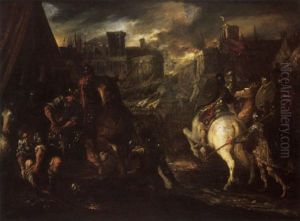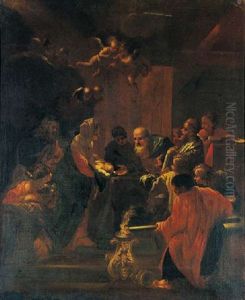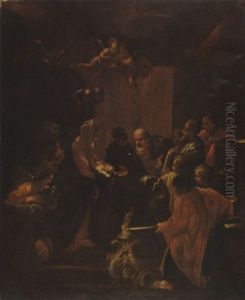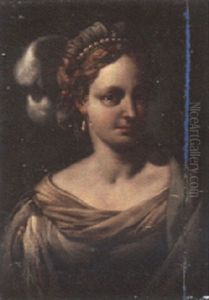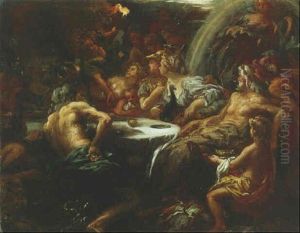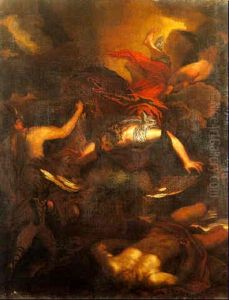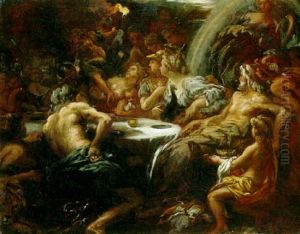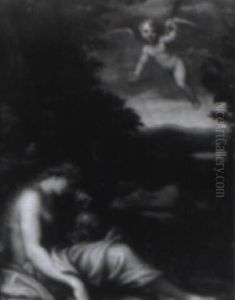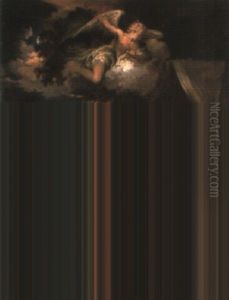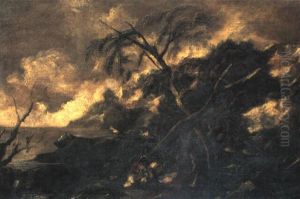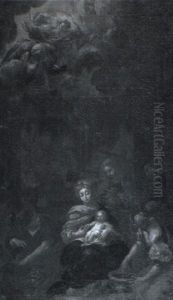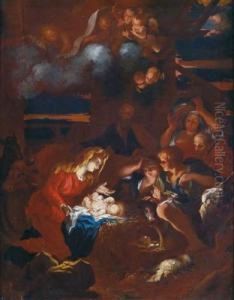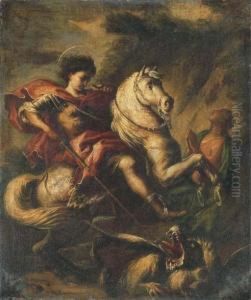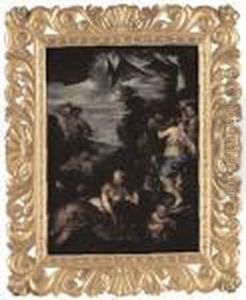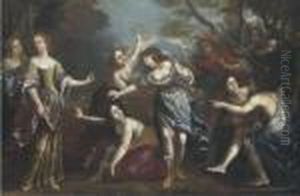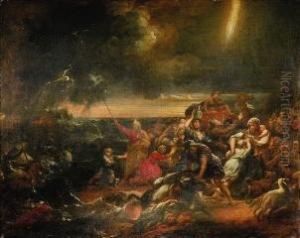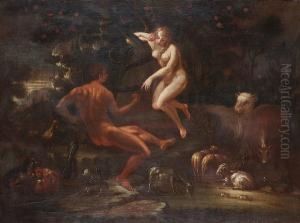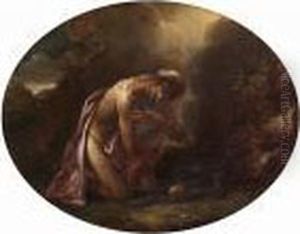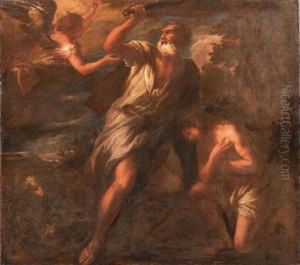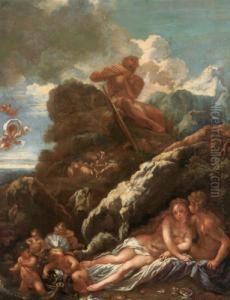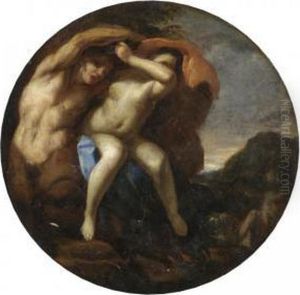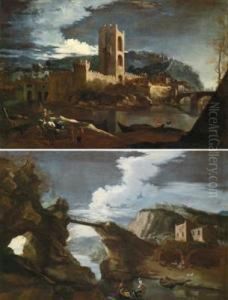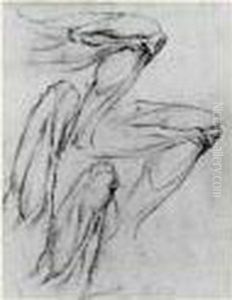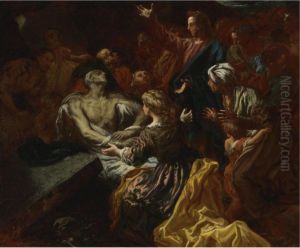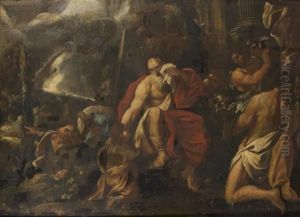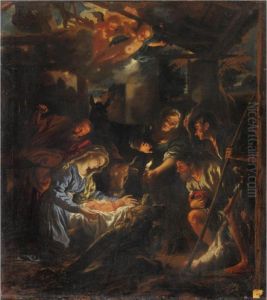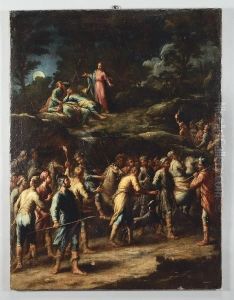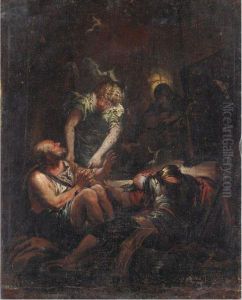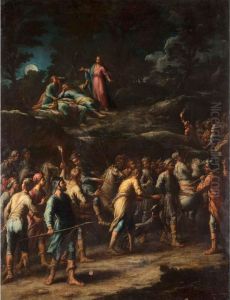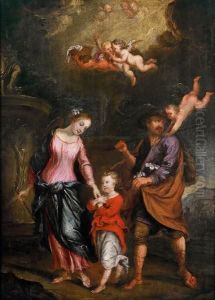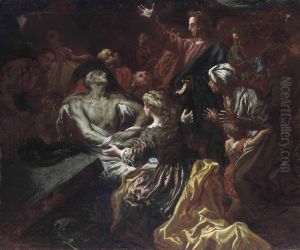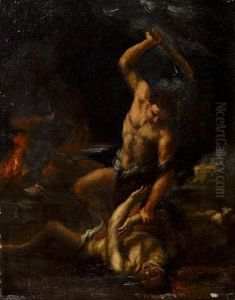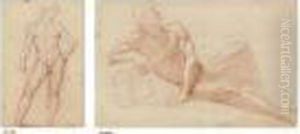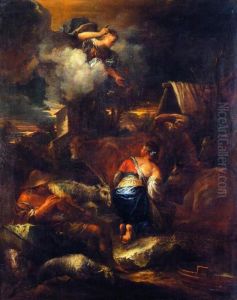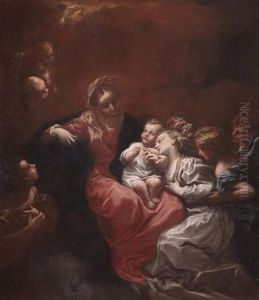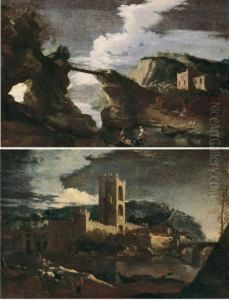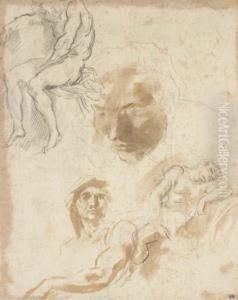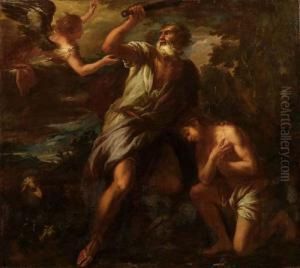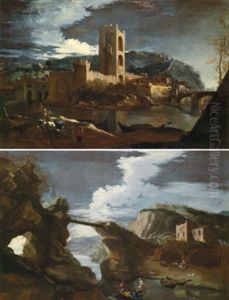Lieven Mehus Paintings
Lieven Mehus, also known as Livio Mehus or Livio Meus, was a Flemish painter and engraver of the Baroque period. Born in 1630 in Oudenaarde, Flanders, which is present-day Belgium, Mehus moved to Italy at a young age where he would spend the majority of his life.
Mehus was a pupil of the prominent Flemish Baroque artist Jacob Jordaens. He moved to Italy to further his training and career, initially residing in Florence. In Florence, Mehus became a part of the Medici court where he worked on various commissions. His works often included religious and mythological themes, and he was known for his skill in painting frescoes and his adept use of chiaroscuro—a technique that uses strong contrasts between light and dark to give the illusion of volume in modelling three-dimensional objects and figures.
The artist's style was influenced by the dynamism and grandeur of his Flemish roots, but also absorbed the richness of Italian Baroque. He collaborated with other artists and also taught, thus influencing the local art scene. Mehus's proficiency extended to portraiture, and he was known to have painted several important figures of his time.
In 1654, Mehus became a member of the Accademia del Disegno in Florence, reflecting his respected position within the artistic community. Some of his notable works include the frescoes in the cloister of Santa Maria Novella and the cupola of the chapel of the Medici at San Lorenzo. Throughout his career, Mehus continued to work on various commissions, both public and private, which contributed to his reputation as a skilled Baroque artist.
Lieven Mehus passed away in 1691 in Florence, leaving behind a legacy that is remembered for its contribution to the Baroque style in Italy, marrying his Flemish artistic heritage with the Italian penchant for drama and movement.
